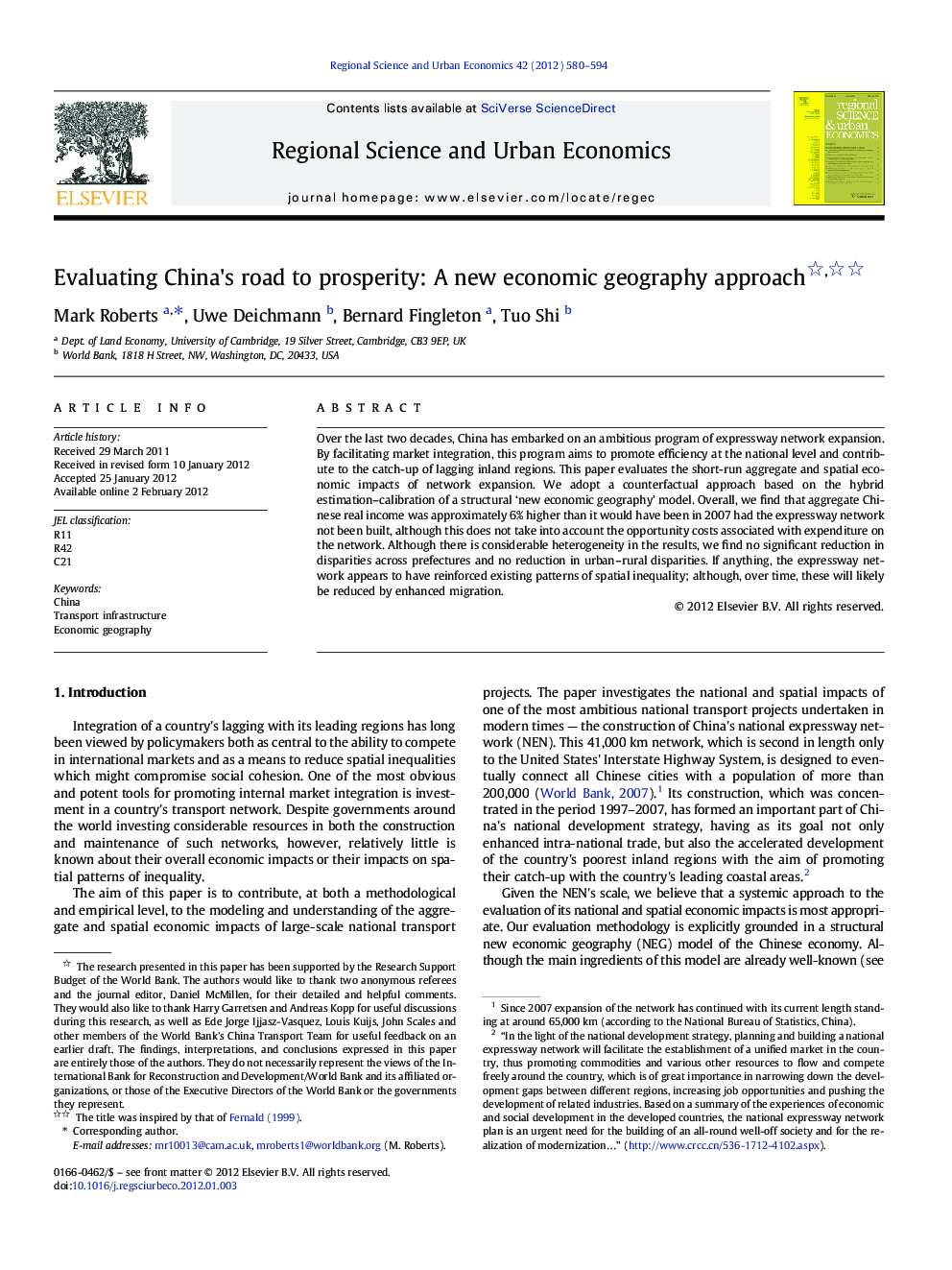| Article ID | Journal | Published Year | Pages | File Type |
|---|---|---|---|---|
| 983727 | Regional Science and Urban Economics | 2012 | 15 Pages |
Over the last two decades, China has embarked on an ambitious program of expressway network expansion. By facilitating market integration, this program aims to promote efficiency at the national level and contribute to the catch-up of lagging inland regions. This paper evaluates the short-run aggregate and spatial economic impacts of network expansion. We adopt a counterfactual approach based on the hybrid estimation–calibration of a structural ‘new economic geography’ model. Overall, we find that aggregate Chinese real income was approximately 6% higher than it would have been in 2007 had the expressway network not been built, although this does not take into account the opportunity costs associated with expenditure on the network. Although there is considerable heterogeneity in the results, we find no significant reduction in disparities across prefectures and no reduction in urban–rural disparities. If anything, the expressway network appears to have reinforced existing patterns of spatial inequality; although, over time, these will likely be reduced by enhanced migration.
► We examine the economic impacts of China's National Expressway Network. ► We adopt an evaluation approach based on a structural new economic geography model. ► The network has increased Chinese real income by roughly 6%. ► The network has not reduced spatial or urban–rural income disparities. ► Estimates of impact are short-run estimates which neglect opportunity costs.
